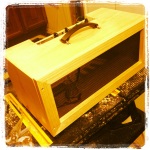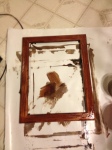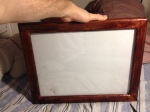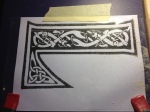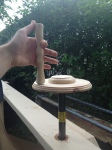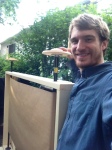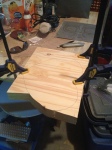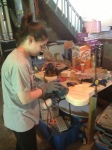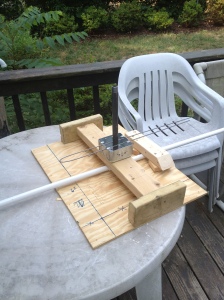It’s been an eternity since my last posting, but I am going to use this site for sharing pictures of woodworking projects.
At some point I will expand this post possibly to detail the individual projects, but for now i wanted to show these to a few of you. my captions will hopefully give you a rough idea what each picture is depicting.
Amplifier Header Cabinet
- Finished with rounded edges and corner braces
- Finished with rounded edges and corner braces
Picture Frame for a Christmas Gift
- A view of the routed profile of the frame
- Test miter joints
- Staining up the frame
- Frame with Stain
- Completed Frame
- Finished Frame with artwork
Wood Burning
- Climb High Don’t Die! A birthday gift for my uncle, a mountain climber who scaled all the major mountains listed on this board, and more.
- A chicken I made for my grandmother
- A flamingo i made for my girlfriend, who is obsessed with flamingos
Router Pantograph and Signs made from it
- Setup
- Router Setup as seen with tracing screw on the pattern
- First letter crved
- Close up on the Celtic font pattern
- Close up on the celtic letter carving
- Sign in its unpainted state
- Final painted and stained sign
Crankie Moving Puppet Show
- Corner Joint Clamping scheme
- Empty frame
- Completed crank handles
- Completed cranks– with me for scale
- Completed with blank screen
Trivets
- Painted Tile
- Trivet after gluing (pic of finished with tung oil and polycryilic laquer to come soon!)
- Cut mitered and rabbeted frame sections of Maple for trivet
- Rough assemblage of trivet #1
- Clamping up trivet # 1
- Twins!
- Trivets with tiles for a preview
Majora’s Mask replica
Note: this one is still a work in progress and the pics are only half the story. we are working off this instructable: http://www.instructables.com/id/The-Legend-of-Zelda-Majoras-Mask-Replica/?ALLSTEPS
- three 3/4″ boards laminated together
- Boards clamping to dry
- Partial cutout of initial shape
- Cutout of initial basic shape outline
- Shaping roughly with a chisel
- Shaping with high grit sandpaper and orbital sander
- Shaping with high grit sandpaper and orbital sander
- Shaping with high grit sandpaper and orbital sander
- Shaped and sanded wood blank
- Beginning the first primer coats
- More painting
- Painted with primer
- Routing channels for tubing for facial feature relief
- Begining to fit the tubing in with epoxy
- All tubing in and drying
- Result of the tubing
- Tubes in with paint
These have been all the wood working projects worth any mention. there’s a few more in the planning stages and I may be gearing up to collaborate on a series of introductory courses.
-M-







